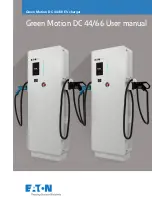
169
Starting and driving
Tires
The tire pressure should match the current
load and speed of the car; for cars sold in
U.S. see page 226; for cars sold in Canada
see page 261.
The tire pressures given apply to
cold
tires,
that is tires that are the same temperature
as the outside air temperature.
The tire pressure increases as the tires
become warm (e.g. during highway driving)
with approximately 0.3 bar (4 psi). When
the temperature of the tires changes by 50°
(10°C), the tire pressure will change 0.1 bar
(2 psi).
Never reduce the pressure of a hot tire. If the
tires are hot when you check them, only
increase the pressure, if necessary.
Underinflated tires wear more quickly than
slightly overinflated tires.
If a valve is leaking, simply unscrew it and fit
a new one.
Important!
Remember to adjust the tire
pressures if you change the load in the car
or intend to drive at substantially lower or
higher speeds than normal.
WARNING
Check the tire pressure
at least once a
month
and before long journeys. Under-
inflation can result in:
• Punctures
• Separation of the tire and tread
• Damage to the sidewalls
• Damage to the rims on poor roads
• Poor handling characteristics
• Premature tire wear
• Increased fuel consumption.
Содержание 2005 9-5
Страница 1: ...Owner s Manual...
Страница 12: ...10 This page has been left blank...
Страница 39: ...37 Security Doors ________________ 38 Central locking ________ 38 Car alarm _____________ 44 IB446 Security...
Страница 52: ...50 Security This page has been left blank...
Страница 252: ...250 Customer Assistance and Information This page has been left blank...
Страница 272: ...270 Notes Notes...
Страница 273: ...271 Notes...
Страница 274: ...272 Notes...
















































